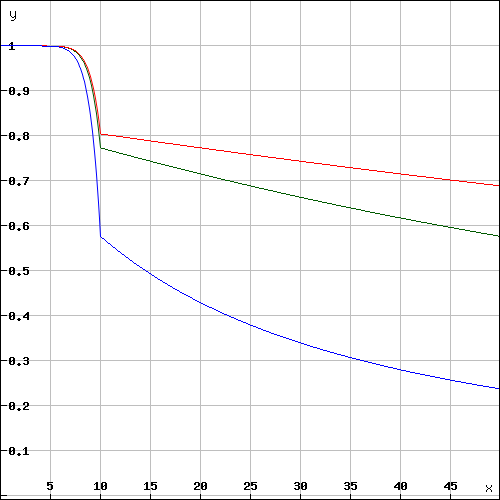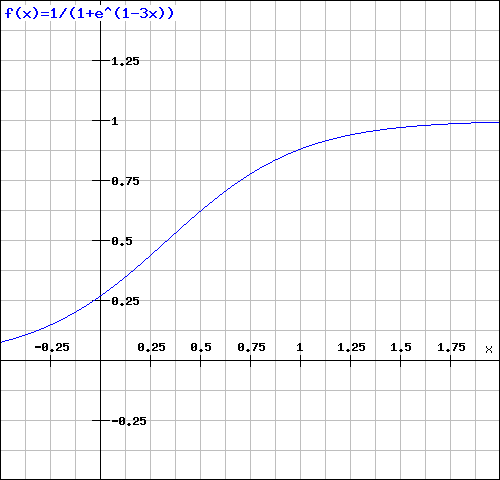Incentivization¶
Important: This concept is still in development and discussion and not yet fully implemented.
The original idea of blockchain is a permissionless peer-to-peer network in which anybody can participate if he only runs a node and syncs with other peers. Since this is still true, we know that such a node won’t run on a small IoT-device.
Decentralizing Access¶
This is why a lot of users try remote-nodes to server their devices. But this introduces a new single point of failure and the risk of man-in-the-middle attacks.
So the first step is to decentralize remote nodes by sharing rpc-nodes with other apps.
![graph minimal_nonplanar_graphs {
node [style=filled fontname="Helvetica"]
fontname="Helvetica"
subgraph cluster_infura {
label="centralized" color=lightblue style=filled
node [color=white]
i[label="infura"]
__a[label="a"]
__b[label="b"]
__c[label="c"]
i -- __a
i -- __b
i -- __c
}
subgraph cluster_1 {
label="centralized per Dapp" color=lightblue style=filled
node [color=white]
_C[label="C"]
_B[label="B"]
_A[label="A"]
_c[label="c"]
_b[label="b"]
_a[label="a"]
_C -- _c
_A -- _a
_B -- _b
}
subgraph cluster_0 {
label="Incubed" color=lightblue style=filled
node [color=white]
{A B C} -- {a b c}
}
}](_images/graphviz-71ded4e43306def595b406128fc142f469c8b365.png)
Incentivization for nodes¶
In order to incentivize a node to serve requests to clients, there must be something to gain (payment) or to lose (access to other nodes for its clients).
Connecting Clients and Server¶
As a simple rule we can define:
The Incubed network will serve your client requests if you also run an honest node.
This requires to connect a client key (used to sign his requests) with a registered server. Clients are able to share keys as long as the owner of the node is able to ensure their security. This makes it possible to use one key for the same mobile app or device. The owner may also register as many keys as he wants for his server or even change them from time to time. (as long as only one client key points to one server) The key is registered in a client-contract, holding a mapping of the key to the server address.
![digraph minimal_nonplanar_graphs {
graph [ rankdir = "LR" ]
fontname="Helvetica"
subgraph all {
label="Registry"
subgraph cluster_cloud {
label="cloud" color=lightblue style=filled
node [ fontsize = "12", color=white style=filled fontname="Helvetica" ]
A[label="Server A"]
B[label="Server B"]
C[label="Server C"]
}
subgraph cluster_registry {
label="ServerRegistry" color=lightblue style=filled
node [ fontsize = "12", shape = "record", color=black style="" fontname="Helvetica" ]
sa[label="<f0>Server A|cap:10|<f2>http://rpc.s1.."]
sb[label="<f0>Server B|cap:100|<f2>http://rpc.s2.."]
sc[label="<f0>Server C|cap:20|<f2>http://rpc.s3.."]
sa:f2 -> A
sb:f2 -> B
sc:f2 -> C
}
subgraph cluster_client_registry {
label="ClientRegistry" color=lightblue style=filled
node [ fontsize = "12", style="", color=black fontname="Helvetica" ]
ca[label="a"]
cb[label="b"]
cc[label="c"]
cd[label="d"]
ce[label="e"]
ca:f0 -> sa:f0
cb:f0 -> sb:f0
cd:f0 -> sc:f0
cc:f0 -> sc:f0
ce:f0 -> sc:f0
}
}
}](_images/graphviz-f63befc5219ba2d91f7963f853b75c7c5baa8b6d.png)
Ensuring Client Access¶
Connecting a client key to a server does not mean he relies on it, but his requests are simply served in the same quality as the connected node serves other clients. This creates a very strong incentive to deliver all clients, because if a server node were offline or refused to deliver, eventually other nodes would also deliver less or even stop responding to requests coming from the connected clients.
To actually find out which node delivers to clients, each server node uses one of the client keys to send Test-Requests and measure the availability based on verified responses.
![digraph minimal_nonplanar_graphs {
node [style=filled fontname="Helvetica"]
fontname="Helvetica"
ratio=0.8;
subgraph cluster_1 {
label="Verifying Nodes" color=lightblue style=filled
node [color=white]
ranksep=900000;
// rank=same
A -> {B C D E }
B -> {A C D E }
C -> {A B D E }
D -> {A B C E }
E -> {A B C D }
}
}](_images/graphviz-c75c22109b3010eb22a66912d996532f9917540e.png)
The servers measure the \( A_{availability}\) by checking periodically (like every hour in order to make sure a malicious server will not respond to test requests only, these requests may be sent through an anonymous network like tor)
Based on the long-term ( >1 day ) and short-term ( <1 day ) availibility the score is calculated:
In order to balance long-term availability and short-term issues, each node measures both and calculates a factor for the score. This factor should ensure that a short-term issues will not drop the score immediately, but keep it up for a while and then drop. Also, long-term availibility must be rewarded by dropping more slowly.
- \( A_{long}\) - the ratio between valid request received and sent within the last month
- \( A_{short}\) - the ratio between valid request received and sent within the last 24h

Depending on the long-term availibility the disconnected node will lose its score over time.
The final score is then calulated:
- \( A\) - the Availibility of the node.
- \( weight\) - the weight of the incoming request from that servers clients (See LoadBalancing)
- \( C_{max}\) - the maximal Number of open or parallel Requests the own server can handle ( will be taken from the registry )
- \( D_{weight}\) - the weight of the Deposit of the node
This score is then used as the priority for incoming requests. This is done by keeping track of the number of currently open or serving requests. Whenever a new request comes in, the node does the following:
- check the signature
- calculate the score based on the score of the node it is connected with.
- accept or reject the request
if ( score < openRequests ) reject()
This way nodes reject requests with a lower score when the load increases. For a client, this means if I have a low score and the load in the network is high, my clients may get rejected often and so have to wait longer for responses. And if I have a score of 0, they are blacklisted even.
Deposit¶
Storing a high deposit brings more security to the network. This is important for proof-of-work-chains. In order to reflect the benefit in the score, the client multiplies it with the \( D_{weight}\) ( the Deposit Weight )
- \( D\) - the stored Deposit of the node
- \( D_{avg}\) - the average Deposit of all nodes
A node without any deposit will so get only 26.8% of the max cap while any node with an average deposit gets 88% and above and quickly reaches 99%

LoadBalancing¶
In an optimal network, each server would handle the same amount as the servers and all clients would have an equal share. In order to prevent situations where 80% of the requests come from clients belonging to the same node, while the node only delivers 10% of requests in the network, we need to decrease the score for clients sending more requests than their shares. So for each node the weight can be calculated by:
- \( R_n\) - number of request serverd to one of the clients connected to the node
- \( {\displaystyle\sum_{i=0}^n} R_i\) - total number of request serverd
- \( {\displaystyle\sum_{i=0}^n} C_i\) - total number of capacities of the registered servers
- \( C_n\) - Capacity of the registered node
Each node will update the \( score\) and the \(weight\) for the other nodes after each check and this way prioritize incoming requests.
The capacity of a node is the maximal number of parallel request it can handle and is stored in the ServerRegistry. This way all client know the cap and will weigh the nodes accordingly, which leads to more load to stronger servers. A node declaring a high capacity will gain a higher score and so its clients will get more reliable responses. On the other hand, if you cannot deliver the load, you may lose your availability and so you score.
Free Access¶
Each node may allow free access for clients without any signature. A special option --freeScore=2 is used when starting the server. For any client requests without a signature, this \(score\) is used. Setting this value to 0 would not allow any free clients.
if (!signature) score = conf.freeScore
A low value for freeScore would server requests only if the current load or the open requests are less then this number, which would mean that getting a response from the network without signing may take very long because this client would send a lot of requests until he is lucky enough to get a response if the load is high. Chances are a lot higher if the load is very low.
Convict¶
Even though servers are allowed to register without a deposit, convicting is still a hard punishment. Because in this case the server is not part of the registry anymore and all his connected clients are treated as without signature. In this case, his devices or app will probably stop working or be extremely slow. (depending on the freeScore configured in all the nodes)
Handling conflicts¶
In case of a conflict, each client has now at least one server he knows he can trust since it is run by the same owner. This makes it impossible for attackers to use Blacklist-Attacks or other threats which can be solved by requiring a response from the “home”-node.